One of the many lives that I lead is that of an Assistant Professor. This week, my mind and body is busy with our college culturals – creating jewellery for my department’s Fashion show apart from producing the show. The next week will take me away too on another academic journey. I will be back with the newer pieces in Sammoh then. In the meanwhile here are a few pieces of Kalamkari based jewellery that I made for Patinam and never wrote about.
Kalamkari saree, bags, and kurtas have been quite popular in the last two years. In the last few months, Kalamkari jewellery has become the rage and I have myself done a few pieces based on it. Before I show the pieces, I would like to shed light on Kalamkari as a painted and printed textile technique.
What is Kalamkari?
Kalam mean pen and kari means craftsmanship (work), so Kalamkari refers to work (drawing) done with a wooden pen. Authentic Kalamkari consists of images drawn or block printed and then painted on cotton or silk fabric treated with Myrobalam and milk paste. Ancient Kalamkari fabrics were exported all over the world. It is said that they were used to cover Egyptian Mummies as the natural dyed helped protect and preserve them.
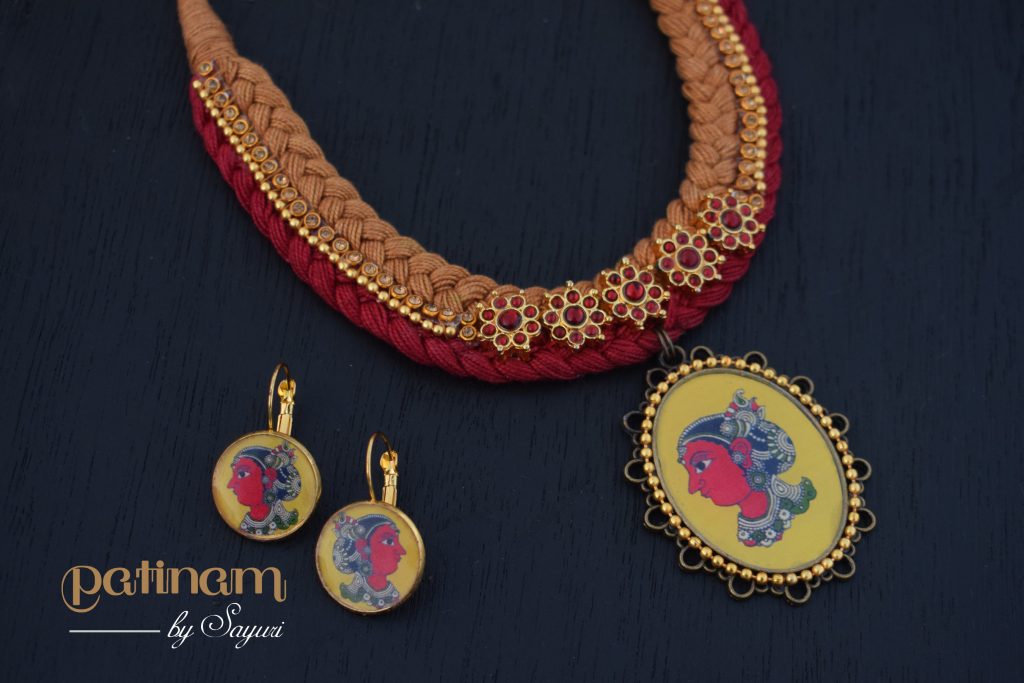
Colours used
Only natural dyes – indigo, red and yellow are used to colour the images. Natural Black is used to outline the forms and figures. Black is obtained by fermenting jaggery and iron rust for atleast 15 days. When the painting is done the dye is actually colorless however as it comes in contact with myrobalam, in the presence of oxygen it turns black. Red (Gray alum water mixture) is filled in next which once again seems colorless (dull brown). The fabric is boiled in chevvalli ver and manjistha mixed with water until the red colour is achieved.
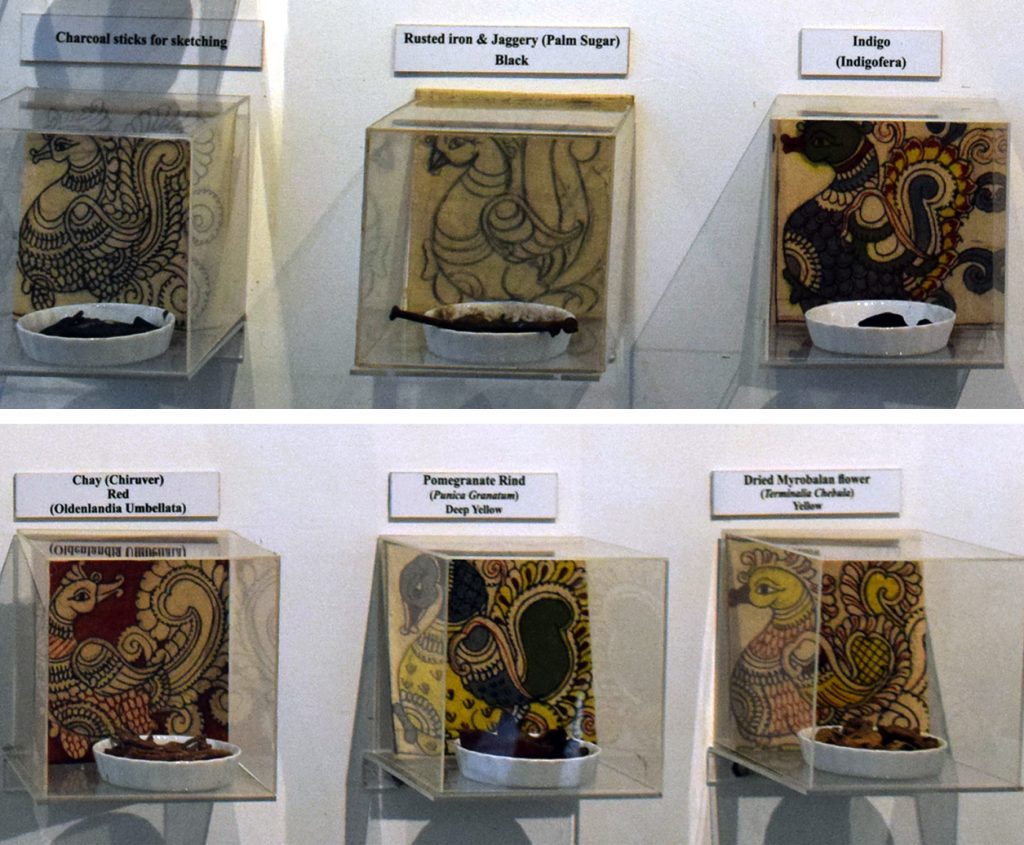
Yellow is derived from the turmeric or pomegranate rind and is the second color to be applied. Blue comes from indigo plants. The Indigo vat has a greenish solution which is obtained by reducing (removing oxygen) from the stalks and leaves of the Indigo plant. While painting (dyeing) the dye is actually green in color. It dries as it comes in contact with oxygen gets oxidized and turns into blue. Blue applied on top of yellow creates green. A detailed process study can be found on NID’s DScource here.
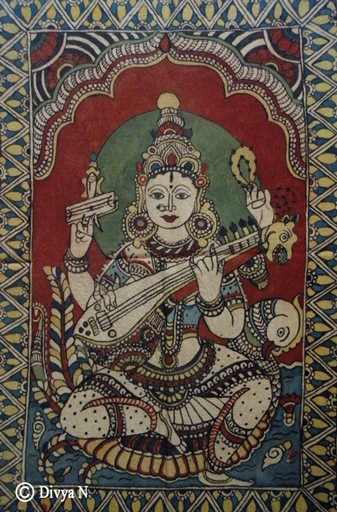
Different types of Kalamkari
In the recent years, I have learned that there are four different kalamkari styles, five if you count Mathanipachedi which is a type of temple fabric. They are
1. Sri Kalahasthi style
At Kalahasthi, the painting is done completely by hand. The images are representative of Hindu Gods and Goddesses and are decorated with flora and fauna motifs that were seen in the Temple sculptures. Human figures – kings and queens, attendants and dancers were also potrayed in these paintings. You can see my painting of Goddess Saraswati in Sri Kalahasthi style above. This was the same image I used in my Kalakshetra Dance necklace. Since the motifs are hand drawn, this style is more fluid and allows spur of the moment creative liberties that the Masulipatinam style does not provide.
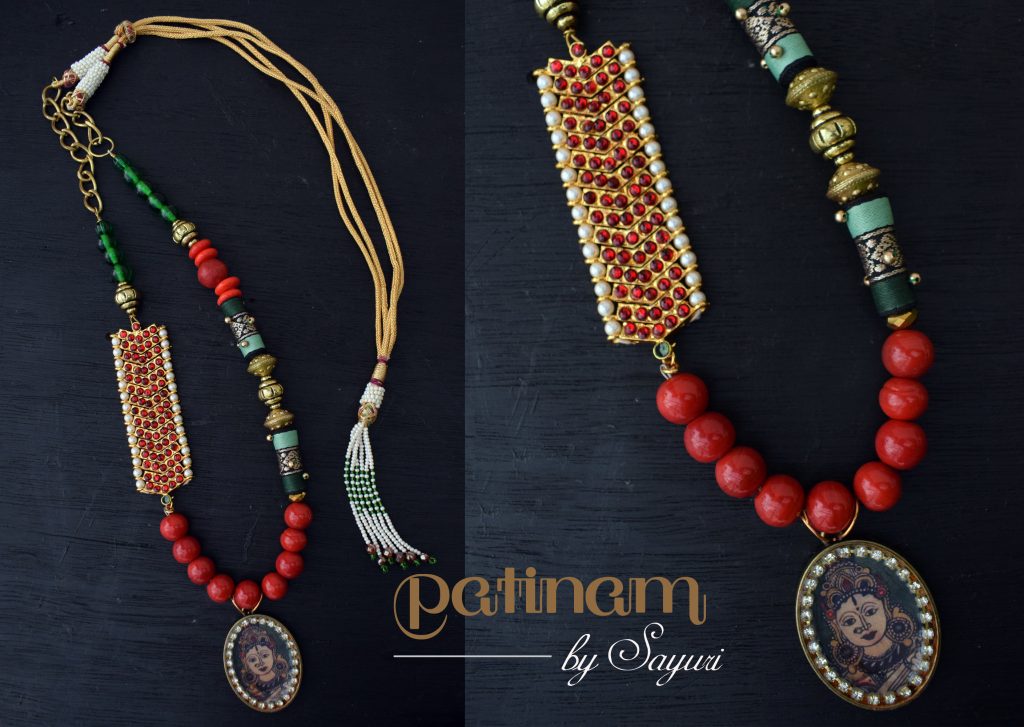
2. Masulipatinam style
At Masulipattinam (Machlipattinam), the fabrics are traditionally block printed to achieve perfect outline. The colors filled by hand (dyed in stages) similar to the Kalahasthi style. Owing to Muslim rule in Golconda, the Masulipatnam Kalamkari was influenced by Persian motifs & designs likes vines, creepers, exotic birds. Since it was a trading post, fabrics were mass produced and exported. This could explain the use of block to print the outlines.
Currently, both sets of motifs are combined regardless of the region – the floral motifs adorn the borders while motifs of swam, peacock, elephant, horse or Gods, and Goddesses are drawn in the center
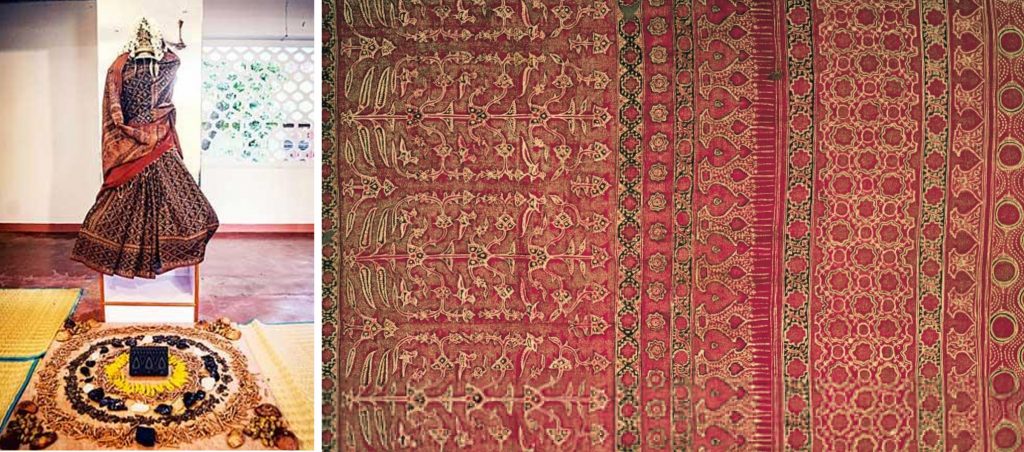
3. Kodali Karupur style
Kodali Karrupur is a style of Kalamkari that developed in the Thanjavur region during the Maratha rule. It was originally done by Naidu families who migrated to Karupur in the 15th – 16th century AD. The Kalamkari work was a further embellishment to the gold brocade work in the woven fabric. This fabric was used as sarees & dhotis by the royal family during the period of Raja Sarfoji and later Raja Shivaji.

4. Sikalnayakanpet style
Known as the Kalamkari of Tamil Nadu, Sikalnayakanpet Kalamkari is known for its bold use of flat colours. Vermilion, yellow and black are predominantly used. Unlike the other styles, the motifs are flat and less detailed. In the above picture, you can see me wearing a Srikalahsti kalamkari and ikat kurta while standing next to Sikalnayankanpet sarees. Notice, how contrasting they are in terms of rendering. If I told you that the red of the saree, is manually painted with a brush by an artist, would you be able to believe that? Well, it is true.
In the Kalamkari Exhibit at Dakshina Chitra, Chennai, below, you can see the obvious link between kalamkari and Chintz fabrics. Chintz were intially hand painted but soon became block prited fabrics. In the recent times, hand painting, block printing, and screen printing are combined to produce Kalamkari fabrics with both natural as well as artificial dyes.
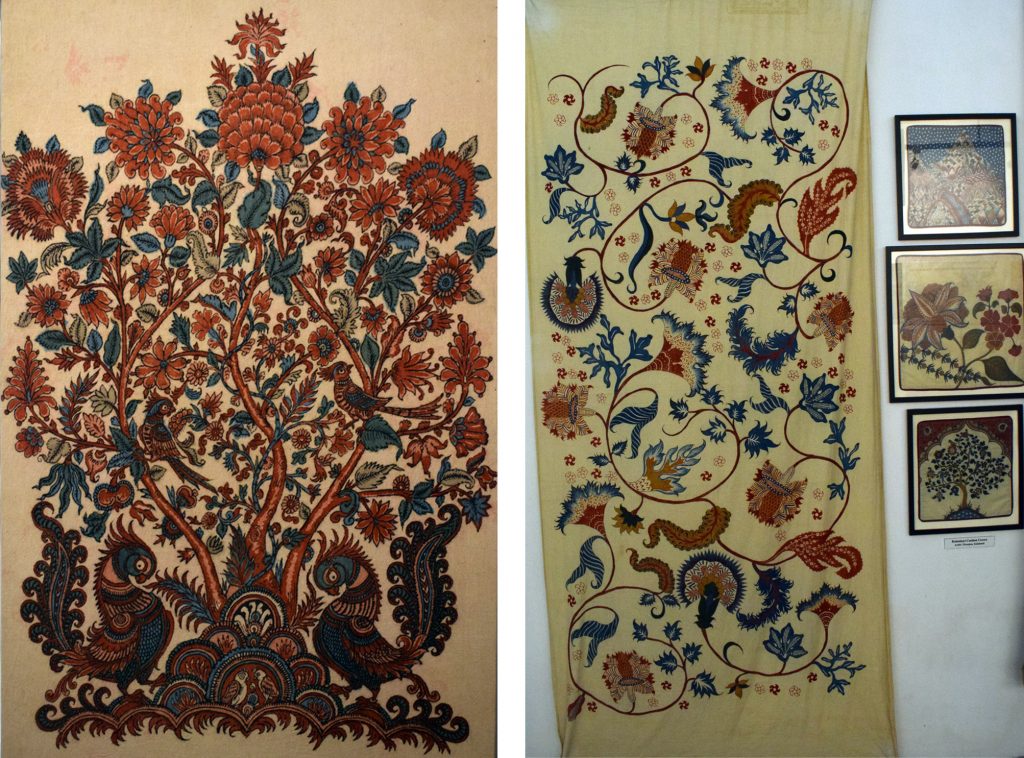
Kalamkari jewellery
While Kalamkari bags and purses have been available in the market for quite some time Kalamkari jewellery is a relatively new entrant. Fabric jewellery makers have typically converted fabrics into earrings and pendants so far. As a certified Kalamkari artist, living close to Kalakshetra, where Srikalahasti kalamkari is practised even today, I wanted to include Kalamkari jewellery in my Patinam collection. While working on these pieces, I diversified from the fabrics into motifs.
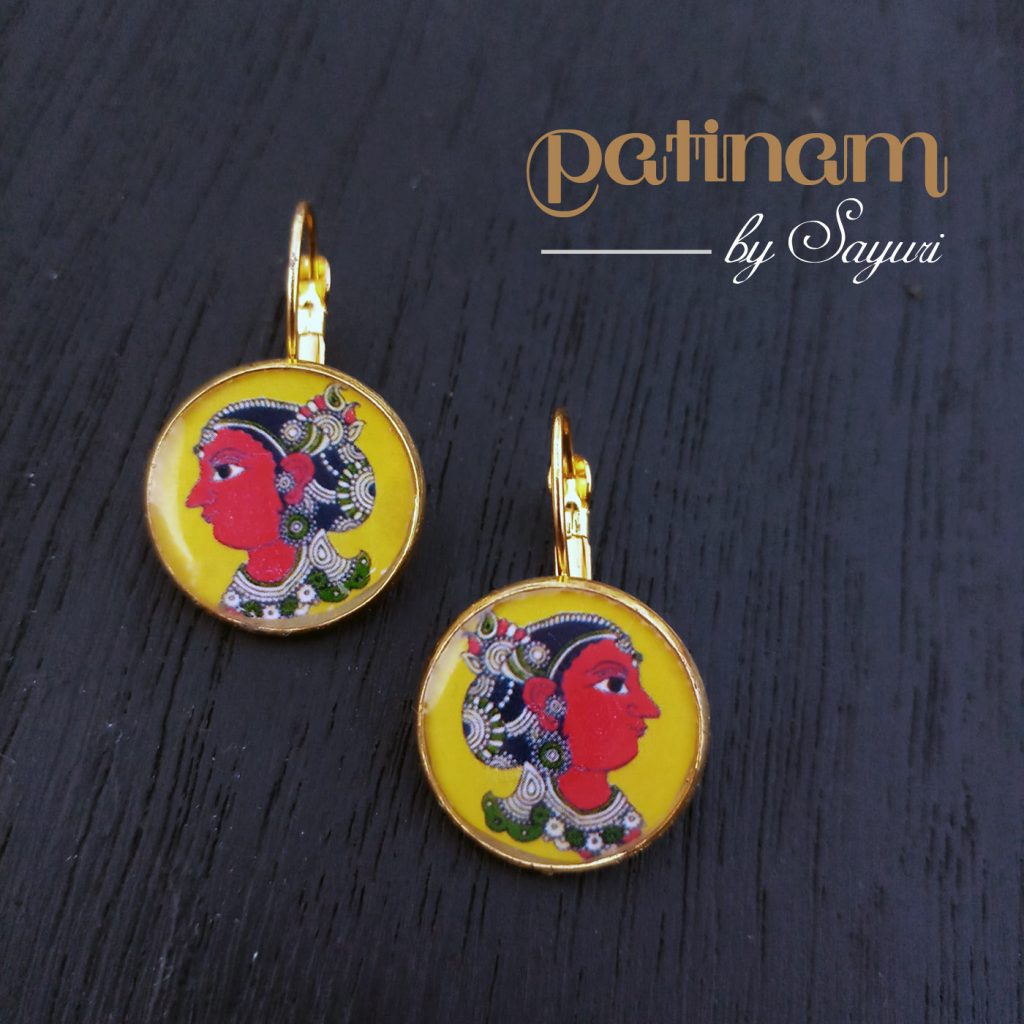
In the first necklace seen in this post and the above earrings, I work with the motif of a Lady’s face. I am not sure if she is a courtesan, a queen or Yashoda – the mother of Lord Krishna but it is indeed a popular motif. I selected this one in particular for I love her hair accessories and the jewellery details.
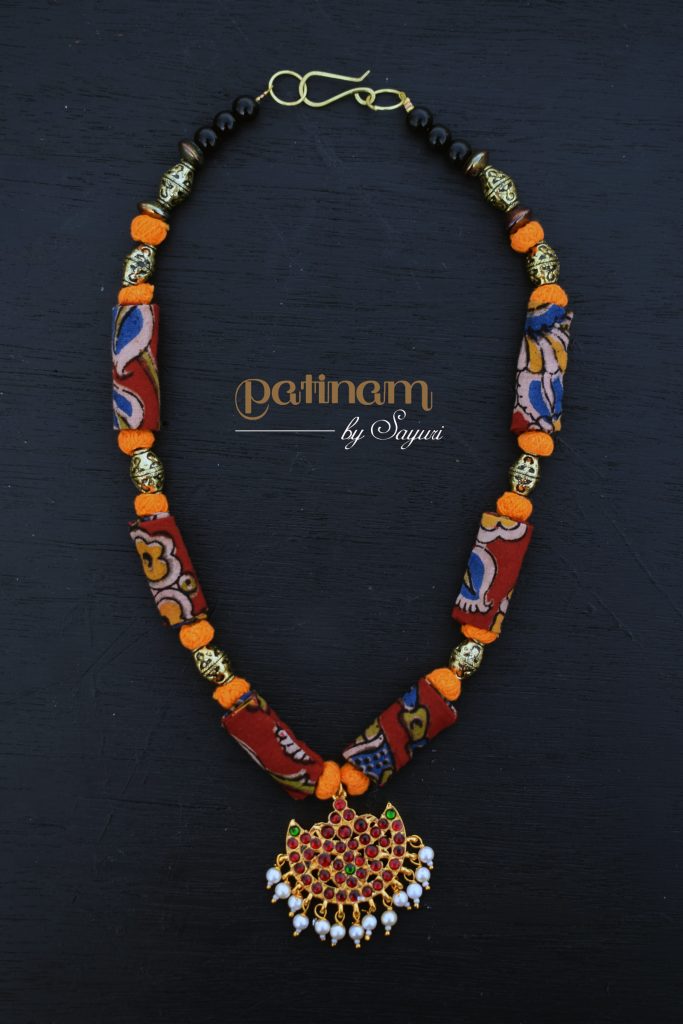
This was, however, my second tryst with Kalamkari jewellery, the first being the fabric bead necklace with a kemp focal. It is pretty straightforward and I was able to keep the price competitive by using screen printed fabric.
For the third and final design, I created an artwork based on a peacock motif. Parrots and peacocks are recurrent in Kalamkari and since I have made a parrot painting before I chose to do peacocks this time.
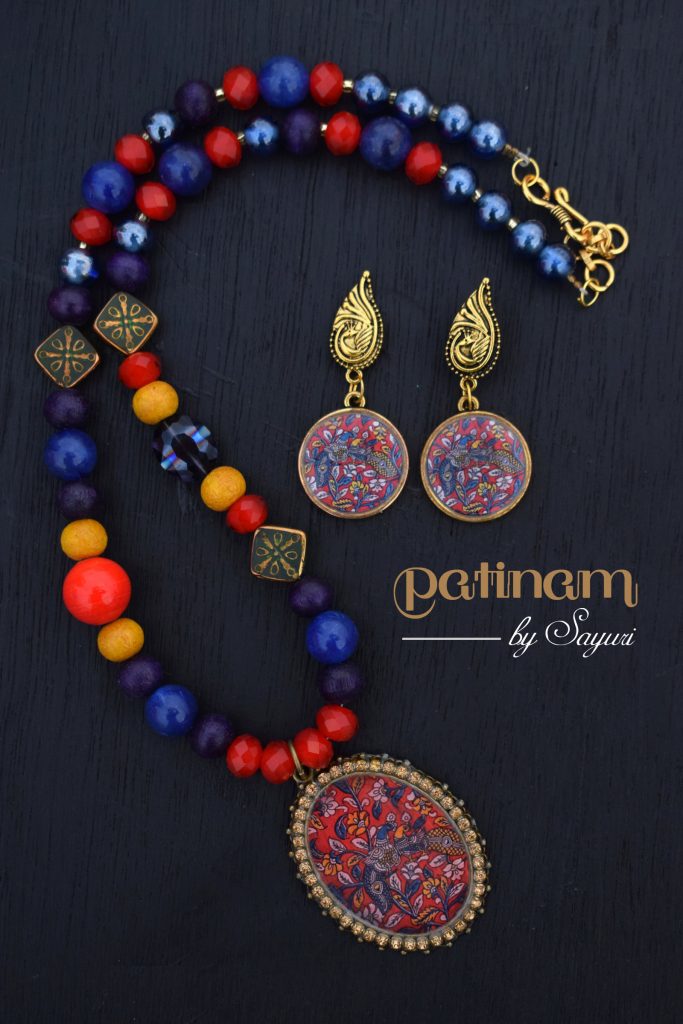
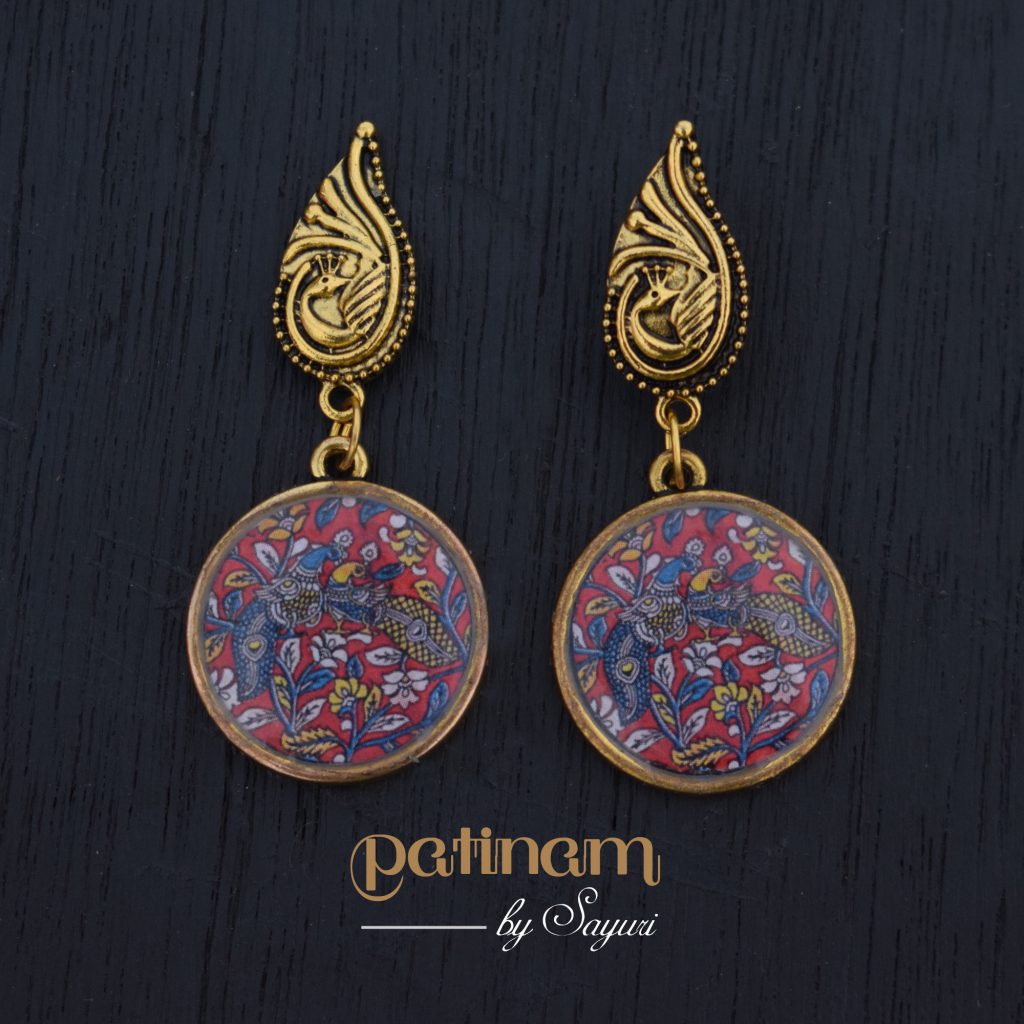
Though the beauty of Kalamkari is its subtle earthy tones, these do not translate well into picture jewellery. As these pieces are typically worn with subdued cotton tunics or sarees, the Kalamkari jewellery must be bold and brighter than usual. Keeping this in mind I have amped up the colours in the pieces. Maybe, as I continue this line, I will create subtle pieces in summer progresses.
PS: All pieces shown in this post are sold. They are not open for reorders.


Leave a Reply